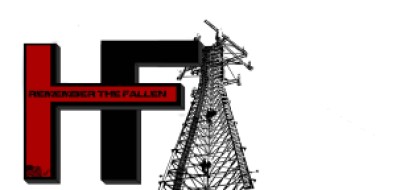Podcast: Play in new window | Download | Embed
Subscribe: Apple Podcasts | RSS
This is part 3 of 3-part series.
How does this change our model here in the US? Well, for tower climbing most contractors are trying to get crews to work on the same model that the carriers have built. This is because they can no longer carry the burden of absorbing problem costs. Trust me, in tower work, you learn to improvise, adapt, and overcome. You learn to carry a ton of spare hardware in your truck. You know to be prepared. However, you can’t always account for everything. It’s just too much. Which is OK except that no one wants to absorb these costs, especially the end customer.
With all that said, the business model is changing. Correction, the model has changed. Like it or not, the carriers have changed the model. The role of PM, (project management) has changed. The PM must manage so many groups and entities and hardware. So many moving parts. They are looking for a flat fee for every site for hardware and services. Any field worker knows that all sites are different, but any accounting person doing budgets doesn’t care. They want a cookie cutter approach. A way to build a budget and move on. Welcome to all national builds for 3G, 4G, 5G, and beyond.
Sign-up to get all your updates!
Don’t miss an episode on iTunes or Stitcher or Overcast
The thing that is happening, so slowly, is the trickle down effect. What I mean by that is that the contractors want to pay their workers the same way they get paid. That’s right, by the job. It’s already starting to happen as more and more people become contractors. Terms of pay are changing. Net 30 is more common than ever. Be prepared for the change. I am having a hard time with it. I know several people who are worried about this model. I just want everyone to be paid fairly and promptly. It’s only right. Good pay for good work. Good work is a gray area though, isn’t it? It’s a matter of perspective. Hard work isn’t enough, quality work that passes the sign off is what matters.
Will this model continue to take over? It seems that way.,
Do I have an answer, sure, pay the people for their work! Unfortunately, the way the layers of contractors are laid out, payments can be a problem. Most of the field workers today are contract employees. Most contractors do not want to pay people through the slow times, they would prefer to hire contractors for the work when they need them. While many of you want to criticize this, it is how business is done. No one seems to care until there is a climber injured or killed.
There are GCs which hire crews and track all the problems in the industry, but they won’t share, even with OSHA, because they have the fear of getting a bad reputation or getting in trouble, so they keep the valuable information to themselves. They know that if they share it could look bad, they don’t see it as helping the industry. I would love to see this change as well, but I have no recourse. Mistakes, lessons learned, and safety concerns are kept hidden from the industry because GCs often feel others need to learn for themselves.
The model for work is changing in the US. The workers will need to find a way to do the work in a timely manner and still deliver quality. The investors of the companies are controlling the industry.
The model is changing and the flat fee model is happening. I have some illustrations that may help you understand but let’s look at it this way. The contractors are getting a flat fee. Prices are driven down because they look at much of the work as a commodity. It is no longer considered a specialized construction job. I guess anyone can work at 100 feet above the ground attached to a tower by a rope. To be honest, I don’t see a lot of carrier CTOs up there.
The pay structure is going to change. The smaller tower companies may get even smaller and there may be more independent crews that get paid by the job, not by the hour. This is the trend that I see.
Wireless construction is expensive. Towers are loaded. Townships and municipalities are making it harder and harder to build new towers. Much talent has left the industry because of the slow and erratic work as well as the work conditions. I am curious how this new change will affect the industry. I would think that tower work would start to demand a premium again, but it certainly doesn’t look like it’s headed in that direction. The flat fee model seems to be where it is headed. ![DAS 101 Distributed Antenna System: A Basic Guide to In-Building Wireless Infrastructure by [Baasan, Soyola]](https://i0.wp.com/images-na.ssl-images-amazon.com/images/I/41lhG0BQVJL.jpg?resize=99%2C158&ssl=1)
That’s OK, but eventually it is going to hit other jobs. It already hit RF engineering. It already hit construction. Soon it will roll into other jobs. I see it all over the industry. When bidding a job, you need to predict what it will cost you, then live with the price. That’s the way it is.
See part 1 and 2!
Be smart, be safe, and pay attention!









